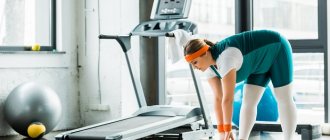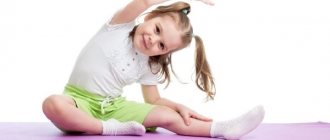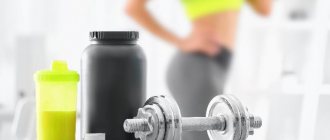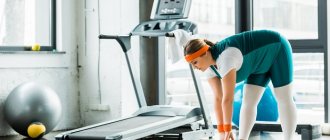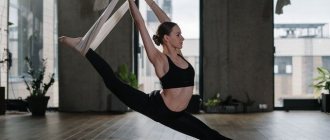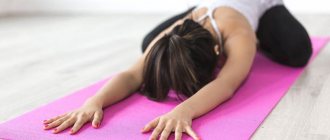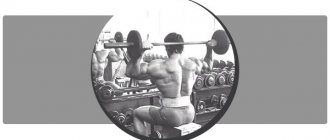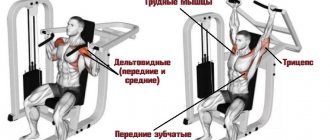Running has a positive effect on the body.
It not only allows you to stay in good shape, but also trains endurance, strengthens muscles, joints and ligaments, develops the respiratory system, improves blood circulation and has a beneficial effect on the condition of blood vessels. However, before running, it is necessary to warm up thoroughly, otherwise there is a risk of injury. Warming up not only prepares joints and ligaments for work, minimizing the likelihood of injury, but also ensures blood flow to the organs. It prepares the heart for running, because during the warm-up it begins to work faster compared to the resting state.
Why does a runner need to warm up?
Warm-up is a set of various exercises that prepare the body for a more serious load. Thanks to it, you can not only avoid injuries, but also make your workouts as effective as possible. The warm-up process warms up the muscles and ligaments, thereby reducing the likelihood of injury while running. Also, warmed muscles work much better, so the effectiveness of your workout increases.
Warming up gradually prepares the heart for stronger loads, and also allows you to saturate your muscles with oxygen due to improved blood circulation. Muscles prepared for exercise are more efficient. Warm-up also triggers the process of enhanced synthesis of hormones, which are responsible for the process of energy production in the body. Any workout is stressful for the body, and a good warm-up will help prepare for the stress. It also gives you psychological readiness for training, because it is impossible to get involved in this process instantly. Thanks to a proper warm-up, training is easier and more effective. You will also avoid injury and heart problems.
Improper or insufficient warm-up can lead to a variety of injuries. The most common among them is sprained ligaments. More serious and unpleasant is a joint injury, in which case you will need long-term rehabilitation. It is much easier to avoid injuries than to treat them later. Lack of warm-up can cause blood pressure surges or lead to heart problems.
Indications for use
Beginners should definitely warm up before running, so as not to damage ligaments and joints or clog muscles . Warm-up is also recommended for people with a sedentary lifestyle, as it helps keep the body in good shape and promotes slow aging.
Warming up will help warm up the body and prevent possible injuries during any activity. Running load helps improve the functioning of the respiratory system, stabilize the functioning of the heart and blood vessels.
General and running warm-up exercises will help:
- improved breathing;
- increasing the oxygen capacity of the blood;
- decreased shortness of breath during any physical activity;
- strengthening the musculoskeletal system;
- hardening of the body;
Spreader
A great exercise to prepare for running is stretching. It develops well not only the leg muscles, but also coordination of movements. The muscles of the back of the thigh work most actively. Their development is very important, because they are actively involved in the running process. The exercise must be performed within a minute. Get into a stable lunge position, sharply push your feet off the floor and change their position. If at first the left leg was in front, now the right leg should be in its place.
Is running really beneficial?
Before moving on to warming up, I suggest you remember the benefits of running. The right information feed will definitely motivate you and help you get off your butt.
So:
- Running has a beneficial effect on the respiratory system. Active breathing during running saturates the organs with oxygen, and deep and rare breathing increases the vital capacity of the lungs and their ventilation ability, which ensures cleansing of the organ. If you're ready for some intense breathing training, read your favorite poem or sing a song halfway through your race.
- Thanks to intense breathing, the runner gets a boost of energy that lasts for an hour after training.
- The functioning of the cardiovascular system improves. Regular jogging lowers your heart rate. Over eight weeks it drops by about 4%. The heart muscle itself is trained, the elasticity of blood vessels is strengthened, thanks to the alternating tension of the leg muscles.
- The oscillatory movement of the body up and down when running has a beneficial effect on lymph and blood.
- The load on the diaphragm simultaneously massages the abdominal cavity.
- Running is a great assistant for losing weight. While running, almost all muscle groups work, calorie consumption increases and metabolism accelerates. Intense jogging at a comfortable pace helps best. An hour-long workout will save you from 500 to 1000 calories. For maximum efficiency, perform periodic accelerations or run obstacle courses. This point can be studied in more detail in the article Losing weight with interval running.
- Training improves the functioning of the musculoskeletal system, preventing the occurrence of radiculitis and arthrosis. Be sure to watch the video on the ABCs of running from the guys from CyclON.
- Scientists have proven that after regular exercise, partial regeneration of liver tissue occurs due to the supply of large amounts of oxygen.
- Jogging increases endurance, especially if you alternate 500 meters of maximum effort running with the same distance jogging.
- Light jogging has a beneficial effect on the psyche. The mood is lifted due to the production of one of the hormones of happiness - endorphin.
- Changes occur in the biochemical composition of the blood, immunity and resistance to viruses increase.
- Running on steps is very useful; at home you can do the exercise on the spot, raising your knees high; alternating the type of running surface surface will also have a positive effect.
Jumping on a support and jumping out of a half squat
Another exercise that helps prepare for running is jumping jacks. Any stable support of small height will do; its role can be played by a low bench, curb, stone, log, and so on. The exercise warms up the calf muscles, as well as the back and front of the thigh. Regular lunges can strengthen your ankle. Do ten exercises on each leg. Strengthening your calf muscles helps you avoid a number of fatigue injuries.
When jumping out of a half-squat, the knee joint and quadriceps femoris muscle work. A good warm-up of your knees is very important, because they bear a lot of stress while running. Perform three series of ten to twenty jumps, landings should not be hard.
When to expect an effect
By warming up and jogging according to a schedule, you can count on training results in just 3 weeks. If you run 1 - 2 times a week, you can expect results in 1.5 - 2 months.
Warm-up before running for professional athletes differs from warm-up for beginners only in the number of exercises, but both options imply the same effect: warming up the body before exercise.
Completely neglecting to warm up before running is harmful to the health of joints and ligaments.
Author of the article: Valery Nesterov.
Advice from professionals
Warming up should not cause discomfort; it is needed to prepare your body for stress, so you should not load it right away. Exercises begin to be performed from top to bottom, first stretching the neck, arms and shoulders, body, and then legs. The legs need to be given special attention, because they are the ones that work when running. The pace should be dynamic, but gentle. You need to start slowly and gradually speed up.
The duration of the set of warm-up exercises should be about ten minutes. This time is enough to prepare the body for running and tune it in the right way. First, a light cardio warm-up is performed for one to two minutes. Next, joint gymnastics is performed, which also takes a couple of minutes. Two to three minutes are devoted to dynamic muscle stretching exercises. Next, cardio warming is carried out again and breathing is restored. After such a complex, your body will be completely ready for running.
Joint exercises will help prepare your joints for work. Cardio warming is necessary for better blood flow to the muscles, and dynamic stretching will make them more elastic.
Main complex
Basic warm-up exercises should begin with the neck, arms and shoulder girdle and end with knee joints, feet and stretching in order to proceed to running exercises with the ligaments and muscles of the legs fully warmed up.
The transition to running exercises necessarily requires stretching your legs as much as possible in order to strengthen their muscles, adjust your breathing, and not get injured. For convenience, the exercises are described in the order in which they are best performed, from top to bottom.
Head rotation
It is necessary to relax and lower your hands or place them on your belt. Next, you need to make slow, rotational movements with your head, 1 turn clockwise, 1 turn counterclockwise. It is necessary to repeat 3 - 5 revolutions in each direction. You need to rotate your head smoothly so as not to stretch the thin muscles and ligaments of the neck.
Head tilts in different directions
It is necessary to tilt your head 1 time to the right shoulder, 1 time to the left shoulder and repeat 3 times, the next 4 - 5 tilts you need to use your hands: slightly increase the strength of each tilt with your hand.
There is no need to put too much pressure on your head to avoid damaging the scalene muscles of the neck.
Head tilts forward and backward
The head bends down as much as possible and presses against the chest; it is necessary to stay in this position for 3 - 4 seconds. You should feel a stretch in the back muscles of the neck. Then you need to smoothly raise your head, throw it back and hold for 3 - 4 seconds. If you have difficulty breathing, you can open your mouth slightly. Should be repeated 3-4 times.
Circular movements in the elbow joint
You need to stretch your arms forward and perform 4 rotations in your forearms towards yourself and 4 rotations away from you. This should be repeated 3 times, but if you feel that the elbow joints are not stretched enough, you can increase the number of repetitions to 5-6 times.
Circular movements in the shoulder joint
The arms are completely relaxed and lowered down. Without straining your arms, you need to simultaneously perform 4 forward and 4 backward rotations with both shoulders, then perform 4 more forward and backward rotations with each shoulder separately. Then you should strongly stretch your arms down and perform 4 sharp rotations with your arms in a circle back and forth.
Rotations can be done with both hands at once or with each hand alternately. The hand should make a full circle with a large amplitude in order to stretch the shoulder joint, shoulder blades and pectoral muscles at the same time.
Hand jerks from the chest
Arm snatches are a must-have exercise for any warm-up, as they help to simultaneously warm up your shoulders, shoulder blades, chest and elbows. It is necessary to clench your hands into a fist, bend your arms to your chest, connecting your fists and raising your elbows. Next, you should perform 2 jerks simultaneously with both hands in different directions, without straightening your elbows, and 2 jerks with straightening your elbows. You need to repeat 4 times.
Jerking your arms up and down
One arm is extended upward, the second arm is extended downward, the hands can be gathered into a fist. Then you need to perform 2 sharp jerks back and quickly swap your hands, performing 2 more jerks. Repeat 4-6 times.
Tilts of the body in different directions
One hand should be placed on the belt or lowered down and relaxed, and the other extended up. It is necessary to perform 2 bends towards the free hand, then change hands and perform 2 bends in the other direction. The arm on top must be fully extended and not bent at the elbow joint when bending. For this exercise, you can also hold two straight arms above your head.
Body rotation
The arms are bent to the chest with the elbows down, the body is tilted forward. You need to perform circular movements with your body, each time returning to the forward fold position: 1 time clockwise, 1 time counterclockwise. You need to repeat these movements 4-5 times. When performing rotations, do not bend your legs.
Circular movements of the pelvis
Hands are placed on the belt, legs are shoulder-width apart and not bent. It is necessary to make 4 smooth rotational movements of the pelvis clockwise, maintaining posture and maintaining maximum amplitude, then 4 movements counterclockwise.
You need to repeat the movements 2-3 times.
Leg exercises
Warm-up before running for beginners necessarily includes exercises to warm up the knee and ankle joints and ligaments, as well as the calf and thigh muscles, this also includes stretching exercises.
You should pay special attention to warming up your legs: you should work through all the exercises as much as possible in order to achieve the best readiness of your legs for the load, since the legs account for 90% of all injuries when running.
Rotations in the knee joint
It is necessary to bend your knees at an angle of 30 - 40 °, place your hands on your kneecaps. Next, slow rotational movements are performed in the knee joint: each time during rotation, the knees are fully extended and bent again. It is necessary to repeat 8 - 10 revolutions in each direction.
Forward bends with stretching
This exercise is a leg warm-up, since its main effect is aimed at stretching the knee joints. The secondary effect of the exercise helps to warm up the muscles of the back and neck. You can leave your feet shoulder-width apart or, if you have poor stretching, place them a little wider. As your stretching improves, you can gradually narrow the distance between your legs until you are completely connected.
It is necessary to lean forward, touching the floor with your fingers and stay in this position for 2 - 3 seconds, or perform springy movements with a jerk up and down, each time increasing the strength of the tilt. Should be repeated 2 - 3 times.
Leg raises with hip rotation
You need to stand on one leg, bending your free knee in front of you. Perform 5 circular movements back and forth, each time returning the knee to its original position. Next, you should change your leg and repeat the same movements.
Lunges right and left
It is necessary to focus on one leg, sit on it, placing the second on the heel in the opposite direction. The free leg should be completely straight. Next, you should make a smooth roll on your free leg and stay in this position for 2 - 3 seconds. You need to repeat 4 times on each leg.
Your arms can be pulled forward into a lock or behind your head. It is best to tear off the heel of the supporting leg by placing emphasis on the toe.
Forward lunges with jumping changes of legs
It is necessary to focus forward on the right leg, placing the left straight back on the toe, and place the hands on the knee of the supporting leg. From this position, 4 springy movements are made. On the fourth lift, you need to jump, swapping your legs, and do the same movements for the other supporting leg. This should be repeated 3-4 times.
Rotations at the ankle joint
One of the legs stands completely on the foot, the second leg is placed on the toe. It is necessary to perform 5 rotational movements in each direction with the foot that is on the toe, then change the leg and perform 5 of the same movements.
Heel-to-toe raises
The legs are placed together so that the feet are pressed against each other. From this position, you need to lift up onto your toes, then roll up onto your heels. You should do 10 such movements.
Running exercises
Warming up before running includes running exercises that strengthen all the leg muscles and prepare them for the upcoming load . For beginners, such exercises are most useful, as they speed up the work of the lungs, adjusting breathing and normalizing the heartbeat.
Running exercises must be included in the pre-run warm-up complex for both beginners and experienced athletes.
Running exercises require space as they are not done on the spot. A treadmill, a path in a park, or a gym is best. It is recommended to do 2 series of running exercises, each of which is 30 m. Between series you need to normalize your breathing: walk 50 m at a slow pace, taking deep breaths and exhalations.
Running with high hips
You need to run, raising your knees to your chest with each step. Steps should be as frequent and small as possible. It is best to bend your arms and swing them along the body towards the opposite leg during the exercise.
Running with shin splints
Run with frequent small steps, during which you need to bend your free leg back, lightly touching your gluteal muscles with your heels.
Jumps
You need to jump on your supporting leg, land and change legs with a long step forward. Your arms should be bent and worked along the body.
Multi-jumps
Multi-jump is a run in which instead of steps, long jumps are made on the opposite leg. The front leg should be bent at the knee, and the back leg should be straightened.
The foot of the front leg should be pressed towards you, and the foot of the back leg should be extended. It is best to work along the body with bent arms: the right leg and left arm go forward and vice versa.
Added steps
Hands should be placed on the belt and stand sideways in the direction of movement. From this position, you need to take a side step, jump and land on the other leg. You should perform one series with each side and one series with a change: every second jump, change the side and the leading leg.
Week schedule
| Monday | Tuesday | Wednesday | Thursday | Friday | Saturday | Sunday |
| beginners | Easy jogging for 5 minutes, basic warm-up exercises, running at an average pace for 15 minutes. | Easy running 7 minutes, general warm-up exercises, running warm-up exercises, running at an average pace 20 minutes. | Easy jogging 7 min., general exercises, running exercises, running at an accelerated pace 25 min. | |||
| After two weeks of running | Easy jogging for 5 minutes, basic exercises, running exercises, running at an average pace with acceleration for 20 minutes. | 5 minutes. jogging, general exercises, running exercises, running at an average pace for 25 minutes. | Easy running 7 minutes, general warm-up exercises, running warm-up, running at an accelerated pace 25 minutes. | |||
| After two months of running | Light jogging for 5 minutes, general warm-up exercises, running exercises, running at an average pace for 20 minutes. | Easy jogging 7 minutes, general warm-up exercises, running exercises, running at an average pace 30 minutes. | Easy jogging 7 minutes, general warm-up exercises, running exercises, running at an accelerated pace 20 minutes. | 7 min., jogging, general exercises, running warm-up, running at an average pace for 25 min. |
Empty fields in the table indicate a day of rest.
Warm-up before the marathon
Warm-up before marathons, half-marathons, and ten-kilometer races follows the same pattern. When performing exercises, you need to monitor their correctness, as well as your breathing. Before short races, you need to pay more attention to warming up, since during marathon races the body continues to warm up during the first kilometers of the race. Before long-distance races, it is recommended to do several short races of 50-70 meters in length with acceleration. Acceleration makes it possible to perfectly warm up all muscle groups that are involved in running. It also stimulates metabolism.
Consolidate the result
In addition to warm-up exercises and jogging, beginners are advised to follow the correct diet : 1300 kcal per day when losing weight, 1700 kcal per day when maintaining weight, 2000 kcal per day when gaining weight.
When jogging regularly, it is necessary to maintain the correct sleep schedule so that the body is completely rested; it needs at least 7 hours of sleep a day. If the sleep schedule is not followed, the body becomes especially susceptible to diseases, the risk of viral and bacterial infection through airborne droplets increases, and excessive fatigue and soreness may occur.
Nutrition
- The recommended meal is 2-3 hours before the race. This allows you to leave the necessary supply of nutrients in the blood, but not to overload the stomach and not distract the body from digesting food.
- No heavy protein foods and lots of fiber. The first one takes a long time to digest before being converted into energy, the second one can cause indigestion.
- A good breakfast is oatmeal, banana, energy bar, semolina, yogurt. Calorie content is calculated based on the type of load and distance.
- Water, how much? Drinking a lot makes it harder to run and makes you want to go to the toilet faster. Low - loss of electrolytes, dehydration. It is best to drink 0.5-0.7 liters of water or an isotonic drink an hour and a half before the race, and another 150-200 grams just before the start. In extreme heat, the norms increase.
- For marathon runners: Don't try new foods during the race itself. Ideally, study the proposal of the competition organizers and check your body’s reaction in advance. Every 5 km take a few sips of water, every hour - reinforce the body with light carbohydrates (up to 240 cal).
- Do not drink alcohol after the race: it is a strong diuretic and causes you to lose fluid.
What are the benefits of morning jogging?
Having decided to go jogging in the morning, first make sure there are no contraindications so as not to harm the body. Individual recommendations will allow you to achieve maximum effect.
Running is useful because it gives a person:
- the ability to lose excess weight and improve overall body tone;
- a surge of endorphins that helps normalize sleep;
- increasing endurance and strengthening the heart muscle due to regular training;
- strengthening the immune system by increasing the content of hemoglobin and red blood cells in the blood;
- improvement of skin condition;
- stabilization of pressure and respiratory organs, shortness of breath stops;
- increase in overall performance;
- activation of brain activity due to an intense rush of oxygen-enriched blood.
It is better to conduct classes in parks, squares, along the embankment, in places with clean air, away from heavy traffic, to minimize the entry of exhaust gases into the lungs.
Increased stride speed
The speed at which your feet touch the ground is called stride speed or stride revolution. You should try taking faster and shorter steps, this will definitely increase your speed.
Most new runners have a running speed that is too slow. Trainers sometimes recommend taking 180 steps per minute. But still, some scientists believe that the speed of steps is a purely individual indicator.
You can determine your current speed and improve it with the following exercises:
- Determine your current performance. While running, count how many times your right foot touches the ground in 1 minute;
- Double this number to get your turnover rate;
- Try to improve it with a running exercise.
Run in 1-minute intervals, starting at your usual pace. Then run again, but increase the count of kicks. Repeat the sequence several times, each time trying to increase the number of kicks by one.
If you have a heart rate monitor, you can monitor your pulse. You perform your most effective steps at your lowest heart rate.
Follow the correct running technique. Your feet should be placed under your hips, not in front of your body, when running.
Climbing stairs
If you don't have access to the mountains, use the stairs. Use the same approach as in the mountains.
- Find a multi-flight staircase
- Climb the stairs in 30 seconds, then go down to recover
- Repeat 5 times
- Gradually work your way up to 10 repetitions.
As your fitness level increases, try to run more stairs.
Psychological attitude
- Goals . They are no less important than the physical shape with which you approach the race. The most successful athletes (Patrick Makau, Kenenis Bekele, Usain Bolt) say that their goal was not to win the competition, but to perform better than in previous races. This best result is different for everyone: correct technique, shorter time, uniform rhythm, half the distance equal to the competition leader, etc.
- Rituals for good luck . It all depends on your knowledge of yourself: some people run better if they are a little nervous, while others show their abilities only in a state of complete calm. For many athletes, there are rituals that bring him good luck: 25 kopecks in his pocket, a black cat or a yellow bus. If you notice something like this, it won’t get any worse.
- Prepare everything in advance . Pack your running uniform, shoes (be sure to have a spare pair), and water. There should be no surprises for you before and after the start. Take care of warm clothes and light food.
- Plan your run . Model in your thoughts the possible course of events in order to prepare tactics in advance: run after the leader, maintain the pace and get ahead when ready, or take a leading position at the very beginning of the start. Think about your technique and muscle function. A tactically planned run is usually more successful than a spontaneous one.
What changes occur in men and women who start running regularly in the morning?
It is also worth mentioning the reaction of the female and male body to constant exercise.
The benefits of running in the morning for the fair sex:
- The happiness hormone is produced, which guarantees an elevated mood throughout the day, will help withstand stressful situations and reduce the craving for sweets;
- Intense exercise promotes blood circulation, which has a positive effect on oxygen saturation and cell renewal. The face acquires a healthy glow, the skin becomes elastic and toned;
- Rejuvenation of the reproductive system of the body, thanks to the flow of blood into the pelvic organs. Jogging is also recommended for women on the eve of and at the onset of menopause. Loads allow the body to rebuild faster;
- The body acquires slender shape and elasticity, muscles are tightened evenly throughout the body, thanks to the distributed load;
- Self-esteem and self-confidence increases, especially if training becomes regular.
For the stronger half of humanity, morning running contributes, in addition to the positive factors listed above, to the production of hormones that affect potency. Increased testosterone levels, decreased fat mass and increased blood circulation enhance sexual desire and erectile function.
Strengthening the walls of blood vessels prevents early impotence and coronary diseases.
Saturation of blood with oxygen promotes the active functioning of areas of the brain responsible for libido.
Important advice! It is advisable to start your morning run slowly, gradually increasing the pace.
